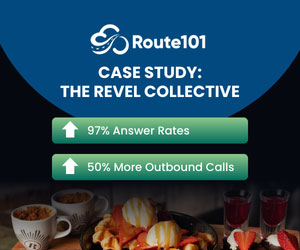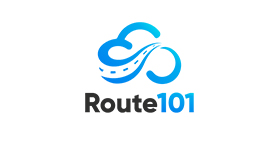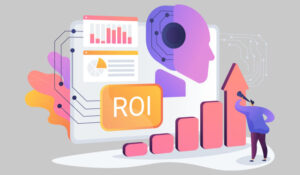Route 101 explores how contact centres can more effectively measure the value of customer experience investments.
A Practical Guide to Measuring CX Value
In contact centres, ROI is often framed around cost reduction. But as customer expectations rise and operations become more complex, the definition of ROI is evolving.
Today, leading contact centres are measuring value not just in pounds saved, but in time, satisfaction, and strategic agility gained.
Recent industry research, including the latest Forrester Total Economic Impact (TEI) of Zendesk report, highlights the measurable returns of investing in AI-powered customer experience platforms such as Zendesk.
But the organisations seeing the greatest impact aren’t just deploying technology – they’re optimising it.
This article explores how contact centre leaders can take a broader, more practical view of ROI, using real-world examples to highlight what works and why.
Four Dimensions of ROI That Matter
1. Operational Efficiency
Reducing contact volumes and streamlining workflows are common goals, but how you achieve them matters.
Example
A betting brand reduced overall contact volume by 50% by improving help centre content and aligning digital channels with customer intent.
Takeaway
Start by analysing repeat queries. Use containment strategies like IVR and AI chatbots to reduce unnecessary contacts, but ensure customers still feel supported.
2. Agent Experience and Retention
Technology that reduces manual workload and supports agents can lead to better performance and lower attrition.
Example
A fintech provider saw a 25% productivity boost and 20% drop in attrition after automating repetitive tasks and improving internal workflows.
Takeaway
Look for opportunities to automate ticket triage, routing, and FAQs. Freeing agents from repetitive work improves morale and service quality.
3. Customer Satisfaction and Responsiveness
Speed and quality of service directly impact loyalty. Improvements in first response time and SLA performance can drive measurable gains.
Example
A wholesale distributor improved SLA performance by 41% and increased CSAT by 12% through better agent enablement and proactive support.
Takeaway
Use SLA and CSAT data to identify friction points. Invest in knowledge management and ensure agents have quick access to accurate information.
4. Scalability and Strategic Enablement
AI and automation are increasingly used to scale service delivery without compromising quality.
Example
A hardware supplier achieved a 75% AI-handled ticket rate and 62% deflection from live agents by training bots to understand customer intent.
Takeaway
AI works best when it’s trained on real-world data. Focus on continuous improvement and ensure fallback options are in place for complex queries.
Making ROI Actionable: A Contact Centre Checklist
To assess the full value of CX transformation, ask:
- Are we measuring both short-term efficiency and long-term strategic impact?
- Do agents have the tools and support they need to succeed?
- Is our self-service strategy reducing contacts or just deflecting them?
- Are we capturing customer feedback and linking it to operational changes?
- Are we using automation to enhance, not replace, human service
Final Thoughts
ROI in contact centres is no longer just about doing more with less. It’s about doing better, with smarter operations, empowered teams, and happier customers.
By broadening the lens through which we assess value, contact centre leaders can build more resilient, responsive, and customer-focused strategies.
For more information about Route 101 - visit the Route 101 Website
Call Centre Helper is not responsible for the content of these guest blog posts. The opinions expressed in this article are those of the author, and do not necessarily reflect those of Call Centre Helper.
Author: Route 101
Reviewed by: Jo Robinson
Published On: 22nd Sep 2025 - Last modified: 24th Sep 2025
Read more about - Guest Blogs, Route 101






 Route 101 is an award-winning technology systems integrator, delivering market-leading cloud contact centre and customer engagement software and solutions. Its products and services help clients to transform their customer engagement, support and empower their workforce, and boost their business operations.
Route 101 is an award-winning technology systems integrator, delivering market-leading cloud contact centre and customer engagement software and solutions. Its products and services help clients to transform their customer engagement, support and empower their workforce, and boost their business operations. 








